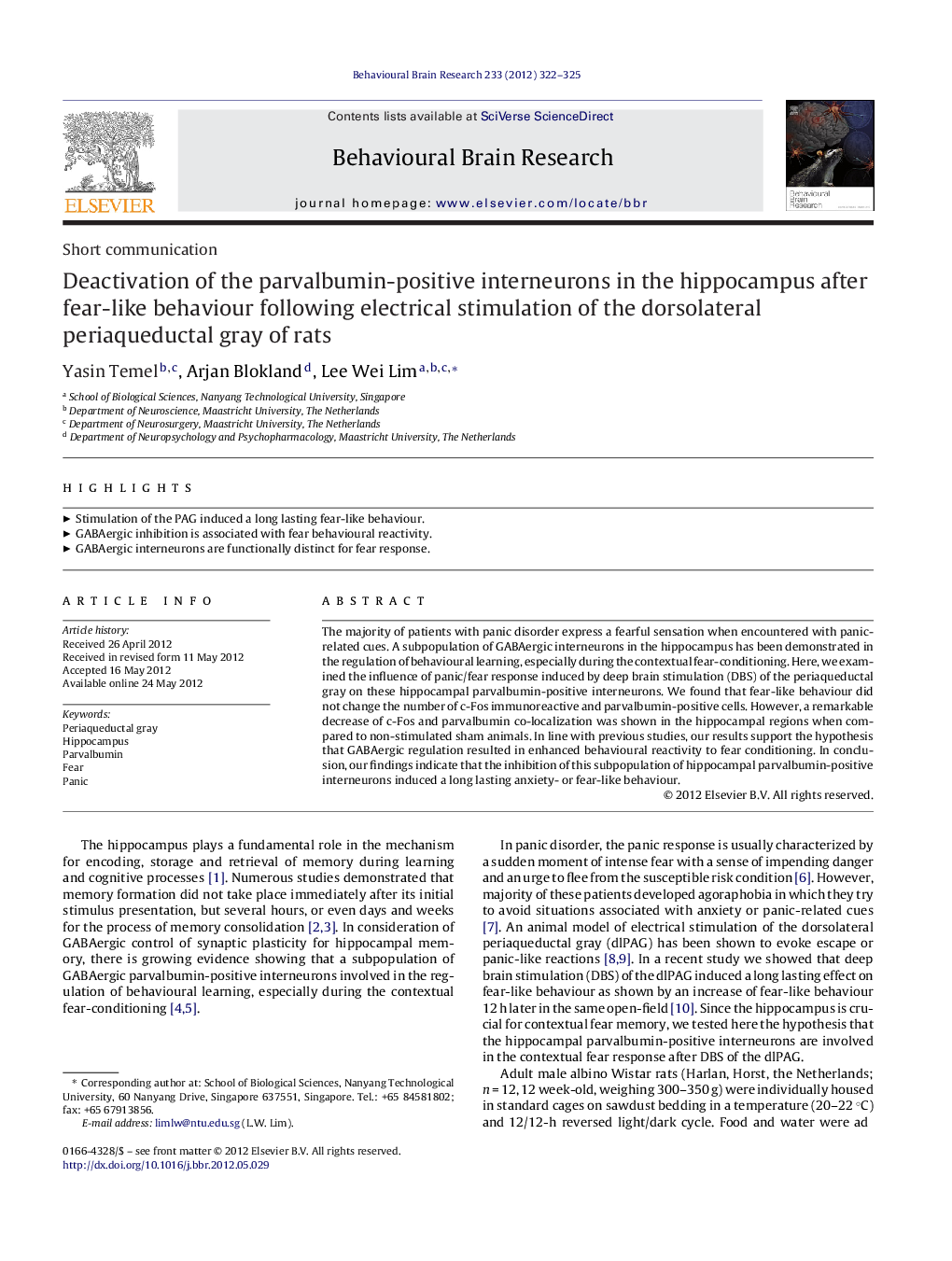| Article ID | Journal | Published Year | Pages | File Type |
|---|---|---|---|---|
| 4313169 | Behavioural Brain Research | 2012 | 4 Pages |
The majority of patients with panic disorder express a fearful sensation when encountered with panic-related cues. A subpopulation of GABAergic interneurons in the hippocampus has been demonstrated in the regulation of behavioural learning, especially during the contextual fear-conditioning. Here, we examined the influence of panic/fear response induced by deep brain stimulation (DBS) of the periaqueductal gray on these hippocampal parvalbumin-positive interneurons. We found that fear-like behaviour did not change the number of c-Fos immunoreactive and parvalbumin-positive cells. However, a remarkable decrease of c-Fos and parvalbumin co-localization was shown in the hippocampal regions when compared to non-stimulated sham animals. In line with previous studies, our results support the hypothesis that GABAergic regulation resulted in enhanced behavioural reactivity to fear conditioning. In conclusion, our findings indicate that the inhibition of this subpopulation of hippocampal parvalbumin-positive interneurons induced a long lasting anxiety- or fear-like behaviour.
► Stimulation of the PAG induced a long lasting fear-like behaviour. ► GABAergic inhibition is associated with fear behavioural reactivity. ► GABAergic interneurons are functionally distinct for fear response.
